Themed collection Spotlight Collection: Atomic and Molecular Layer Deposition

Area selective deposition using alternate deposition and etch super-cycle strategies
Area selective deposition by super-cycle alternating atomic layer deposition and etch-back processes.
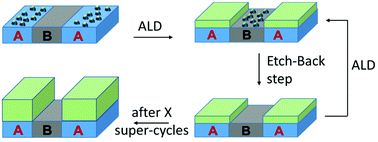
Dalton Trans., 2022,51, 442-450
https://doi.org/10.1039/D1DT03456A
Liquid atomic layer deposition as emergent technology for the fabrication of thin films
Liquid atomic layer deposition (LALD) has emerged as a complementary technology of atomic layer deposition (ALD) to help overcome some of the challenges currently faced from working in the gas-phase.
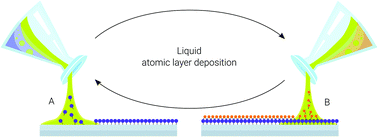
Dalton Trans., 2021,50, 6373-6381
https://doi.org/10.1039/D1DT00232E
The chemistry of guanidinate complexes of the platinum group metals
In the present Perspective article, synthetic and structural aspects, reactivity studies and applications of platinum group metal complexes containing guanidinate ligands are discussed.
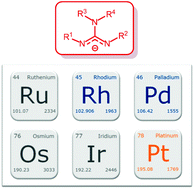
Dalton Trans., 2019,48, 9021-9036
https://doi.org/10.1039/C9DT01289C
Effect of different oxide and hybrid precursors on MOF-CVD of ZIF-8 films
Vapor-phase fabrication of the metal–organic framework ZIF-8 through the conversion of precursors prepared by physical, atomic, and molecular layer deposition.
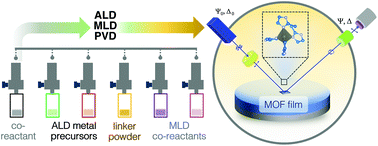
Dalton Trans., 2021,50, 6784-6788
https://doi.org/10.1039/D1DT00927C
Synthesis of volatile, reactive coinage metal 5,5-bicyclic amidinates with enhanced thermal stability for chemical vapor deposition
Coinage metal bicyclic amidinates for chemical vapor deposition.
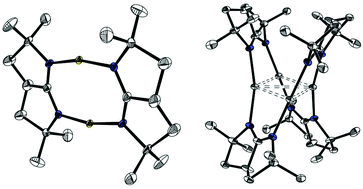
Dalton Trans., 2019,48, 6709-6713
https://doi.org/10.1039/C9DT01202H
Growth behavior of Ir metal formed by atomic layer deposition in the nanopores of anodic aluminum oxide
The growth behavior of ALD metallic Ir has been explored on various surfaces and in AAO nanopores systematically. The surface hydrophilicity and O2 partial pressure are crucial. The Ir infiltration depth into AAO follows a diffusion-limited model.
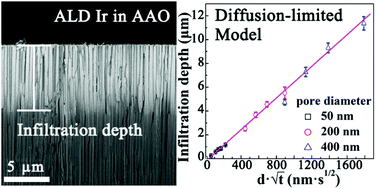
Dalton Trans., 2022,51, 9664-9672
https://doi.org/10.1039/D2DT01358D
Atmospheric atomic layer deposition of SnO2 thin films with tin(II) acetylacetonate and water
Our work presents a new process for the spatial atomic layer deposition (SALD) of SnO2 thin films from tin(II) acetylacetonate and water, supported by a DFT study of different Sn metalorganic precursors.
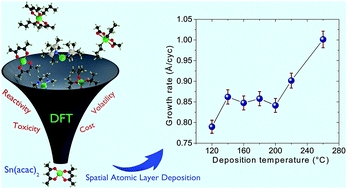
Dalton Trans., 2022,51, 9278-9290
https://doi.org/10.1039/D2DT01427K
Toward controlling the Al2O3/ZnO interface properties by in situ ALD preparation
The electronic band alignment of an alumina/zinc oxide thin-film heterostructure solely grown by atomic layer deposition has been determined by XPS/UPS depth profiling, correlating the electronic properties with the interface chemical composition.

Dalton Trans., 2022,51, 9291-9301
https://doi.org/10.1039/D1DT04008A
Spatial atmospheric pressure molecular layer deposition of alucone films using dimethylaluminum isopropoxide as the precursor
Dimethylaluminum isopropoxide (DMAI) and ethylene glycol (EG) yield alucone films with properties similar to those of films prepared using trimethylaluminum (TMA) and EG but with much higher deposition rates (nm s−1).
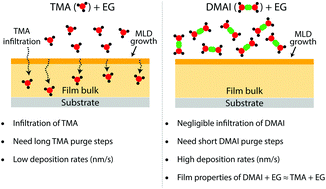
Dalton Trans., 2022,51, 7918-7927
https://doi.org/10.1039/D2DT00570K
Journey of a molecule from the solid to the gas phase and vice versa: direct estimation of vapor pressure of alkaline-earth metalorganic precursors for atmospheric pressure vapor phase deposition of fluoride films
An easy approach is presented to determine vapor pressures of complexes and thus to evaluate “a priori” their suitability as precursors for AP-MOCVD or spatial ALD. Fluorinated Mg and Ca compounds have been applied to the AP-MOCVD of MF2 films.
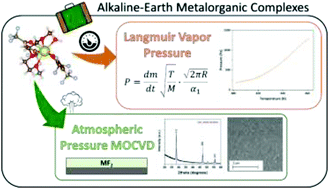
Dalton Trans., 2022,51, 7352-7362
https://doi.org/10.1039/D2DT00479H
Thermal atomic layer deposition of In2O3 thin films using a homoleptic indium triazenide precursor and water
In2O3 thin films are deposited using thermal atomic layer deposition with an indium(III) triazenide precursor and water. The films and deposition process are on par with the previously reported indium(III) formamidinate.

Dalton Trans., 2022,51, 4712-4719
https://doi.org/10.1039/D1DT03748J
Atomic layer deposition of lithium zirconium oxides for the improved performance of lithium-ion batteries
The newly developed ternary LixZryO coating via a super-ALD process remarkably improves the performance of NMC622 cathodes in lithium-ion batteries.
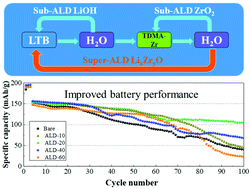
Dalton Trans., 2022,51, 2737-2749
https://doi.org/10.1039/D1DT03600A
Tunable TiO2–BN–Pd nanofibers by combining electrospinning and atomic layer deposition to enhance photodegradation of acetaminophen
TiO2–BN–Pd materials were successfully prepared by combining electrospinning and atomic layer deposition. The obtained materials show outstanding properties for the degradation of acetaminophen (ACT) under UV and visible light as well as high stability and recyclability.
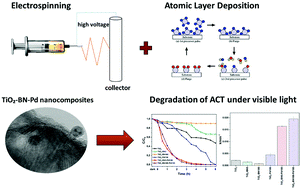
Dalton Trans., 2022,51, 2674-2695
https://doi.org/10.1039/D1DT03715C
Nanoscale Li, Na, and K ion-conducting polyphosphazenes by atomic layer deposition
We demonstrate the atomic layer deposition synthesis of a family of alkali (Li, Na, K) phosphorus oxynitride (APON) ion-conducting films. The reaction parameters, chemical structure, and electrochemical properties of each material are summarized.
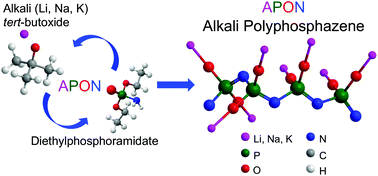
Dalton Trans., 2022,51, 2068-2082
https://doi.org/10.1039/D1DT03736F
In situ analysis of growth rate evolution during molecular layer deposition of ultra-thin polyurea films using aliphatic and aromatic precursors
MLD growth evolution depends on the deposition surface and monomer structure of the deposited film.
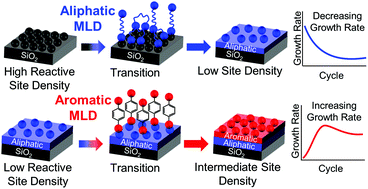
Dalton Trans., 2022,51, 1838-1849
https://doi.org/10.1039/D1DT03689K
Facile synthesis of an organic/inorganic hybrid 2D structure tincone film by molecular layer deposition
ALD/MLD hybrid 2D tincone films were investigated structurally post-annealing. GIWAXS showed that individual benzene ring bonds were combined with the SnO layer in a repeated arrangement of the tincone monomer.

Dalton Trans., 2022,51, 1829-1837
https://doi.org/10.1039/D1DT02984C
Plasma-enhanced atomic layer deposition of nickel and cobalt phosphate for lithium ion batteries
Both a cobalt- and (novel) nickel phosphate deposited through a plasma-enhanced ALD process have been characterised as an LIB electrode.
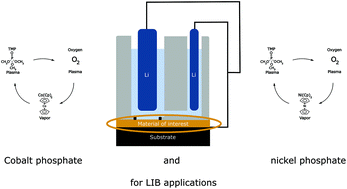
Dalton Trans., 2022,51, 2059-2067
https://doi.org/10.1039/D1DT03417K
Avoiding water reservoir effects in ALD of functional complex alkali oxides by using O3 as the oxygen source
A new ozone-based route for excellent control of complex alkali oxides by ALD.

Dalton Trans., 2022,51, 927-934
https://doi.org/10.1039/D1DT03960A
Atomic layer deposition of SnSex thin films using Sn(N(CH3)2)4 and Se(Si(CH3)3)2 with NH3 co-injection
This study introduces the atomic layer deposition (ALD) of tin selenide thin films. By changing the growth temperature, the chemical composition of the Sn/Se ratio could be varied for the given precursor injection conditions.
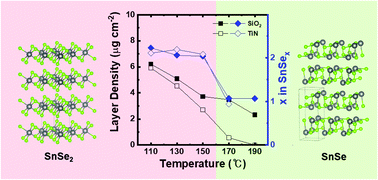
Dalton Trans., 2022,51, 594-601
https://doi.org/10.1039/D1DT03487A
Pulsed heating atomic layer deposition (PH-ALD) for epitaxial growth of zinc oxide thin films on c-plane sapphire
High-temperature heat pulses interleaved with ALD cycling enables the growth of heteroepitaxial ZnO on c-plane sapphire substrates. This “pulsed-heating” ALD separates the chemistry delivery process from the material’s structural crystallization.
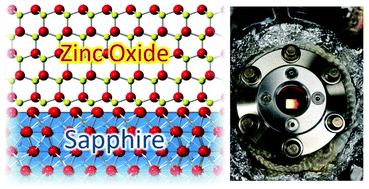
Dalton Trans., 2022,51, 303-311
https://doi.org/10.1039/D1DT03581A
Investigations into the structure, reactivity, and AACVD of aluminium and gallium amidoenoate complexes
Amidoenoate complexes of Al and Ga have been synthesised and their coordination chemistry studied in relation to precursor stability. A selection of the complexes were used in aerosol assisted CVD to deposit thin films of Al2O3 and Ga2O3.
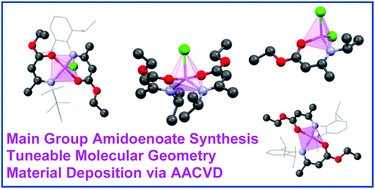
Dalton Trans., 2022,51, 156-167
https://doi.org/10.1039/D1DT03365D
Atomic layer deposition of thin-film sodium manganese oxide cathode materials for sodium ion batteries
Insights into atomic layer deposition chemistries enable sodium manganese oxide thin film cathodes for sodium ion battery research.
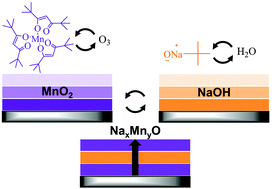
Dalton Trans., 2021,50, 18128-18142
https://doi.org/10.1039/D1DT03479K
Thermal atomic layer deposition of rhenium nitride and rhenium metal thin films using methyltrioxorhenium
The thermal atomic layer deposition of rhenium nitride and rhenium metal thin films is presented using methyltrioxorhenium and 1,1-dimethylhydrazine. Methyltrioxorhenium is halogen-free and rhenium films are obtained after a thermal annealing step.
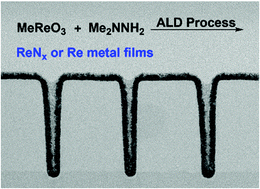
Dalton Trans., 2021,50, 18202-18211
https://doi.org/10.1039/D1DT03454E
Growth modulation of atomic layer deposition of HfO2 by combinations of H2O and O3 reactants
Two counter reactants, H2O and O3, were individually employed, as well as in combination with consecutive exposure by H2O–O3 and O3–H2O. The film growth behaviors and properties differed when the sequence of exposure of the substrate to the reactants was varied.
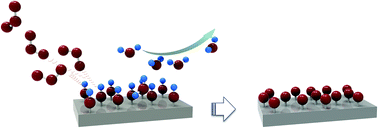
Dalton Trans., 2021,50, 17935-17944
https://doi.org/10.1039/D1DT03465K
Role of terminal groups in aromatic molecules on the growth of Al2O3-based hybrid materials
First principles investigation of the molecular mechanism of Al2O3-based hybrid materials grown with homo- or hetero-bifunctional aromatic compounds with hydroxy (OH) and/or amino (NH2) terminal groups.
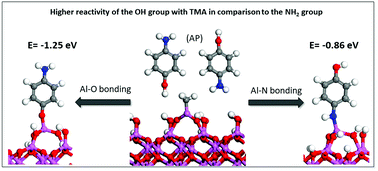
Dalton Trans., 2021,50, 17583-17593
https://doi.org/10.1039/D1DT03195C
Atomic/molecular layer deposition of Ni-terephthalate thin films
High-quality nickel-terephthalate thin films can be grown through gas-phase atomic/molecular layer deposition using Ni(thd)2 and terephthalic acid as precursors.
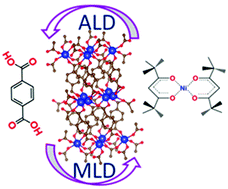
Dalton Trans., 2021,50, 16133-16138
https://doi.org/10.1039/D1DT02966E
Highly-stable PEN as a gas-barrier substrate for flexible displays via atomic layer infiltration
The prolonged exposure time in ALI process benefited the infiltration of precursors into the subsurface of polymer substrates, and the modified PEN substrate with tuned surface chemistry showed excellent barrier property and mechanical stability.

Dalton Trans., 2021,50, 16166-16175
https://doi.org/10.1039/D1DT02764F
Water vapor and hydrogen gas diffusion barrier characteristics of Al2O3–alucone multi-layer structures for flexible OLED display applications
Al2O3/Alucone multi-layer films fabricated by alternate ALD/MLD process were evaluated for the gas diffusion barrier property for H2O and H2, indicating enhanced tortuosity and flexibility of multi-layer structure.
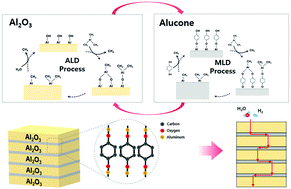
Dalton Trans., 2021,50, 15841-15848
https://doi.org/10.1039/D1DT02989D
Amorphous AlN films grown by ALD from trimethylaluminum and monomethylhydrazine
Amorphous AlN films grown from TMA and MMH were obtained and investigated. The amount of impurities varied from 3 to 9 at% for carbon, and 4 to 12 at% for oxygen. The values of mechanical characteristics were ∼14 GPa (hardness) and ∼164 GPa (Young's modulus).
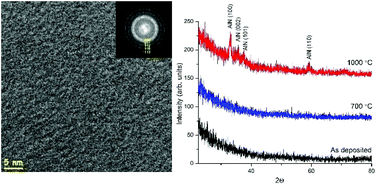
Dalton Trans., 2021,50, 15062-15070
https://doi.org/10.1039/D1DT02529E
Highly conductive and stable Co9S8 thin films by atomic layer deposition: from process development and film characterization to selective and epitaxial growth
A new ALD process using easily synthesized CoCl2(TMEDA) and H2S enables deposition of ultrathin, highly conductive and thermally stable Co9S8 films selectively on SiO2 without growth on Si–H.
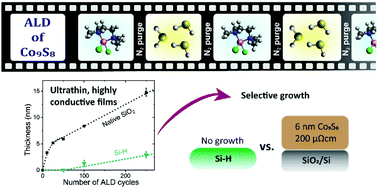
Dalton Trans., 2021,50, 13264-13275
https://doi.org/10.1039/D1DT02315B
HfS2 thin films deposited at room temperature by an emerging technique, solution atomic layer deposition
The two-dimensional material and semiconducting dichalcogenide hafnium disulfide is deposited at room temperature by atomic layer deposition from molecular precursors dissolved in hexane.

Dalton Trans., 2021,50, 13066-13072
https://doi.org/10.1039/D1DT01232K
Quinizarin: a large aromatic molecule well suited for atomic layer deposition
Quinizarin is a well-suited molecule for obtaining strongly colored materials by atomic layer deposition.

Dalton Trans., 2021,50, 8307-8313
https://doi.org/10.1039/D1DT00683E
About the importance of purge time in molecular layer deposition of alucone films
In MLD of alucone using trimethylaluminum (TMA) and ethylene glycol (EG), TMA is known to infiltrate into the MLD film taking very long to outgas. An insufficient purge can then lead to an additional CVD component in the overall growth.
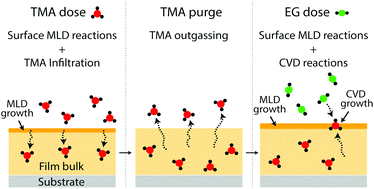
Dalton Trans., 2021,50, 5807-5818
https://doi.org/10.1039/D1DT00623A
Multi-metal coordination polymers grown through hybrid molecular layer deposition
Ternary coordination polymers deposited by hybrid molecular layer deposition (MLD) techniques are of interest as highly conformal, functional materials.
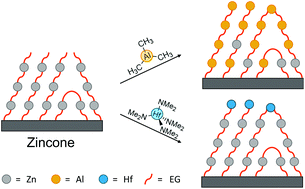
Dalton Trans., 2021,50, 4577-4582
https://doi.org/10.1039/D1DT00465D
Novel hierarchical CuNiAl LDH nanotubes with excellent peroxidase-like activity for wide-range detection of glucose
Novel hierarchical CuNiAl layered double hydroxide (CuNiAl LDH) nanotubes were prepared with the help of atomic layer deposition (ALD) method and exhibited excellent peroxidase mimicking property.

Dalton Trans., 2021,50, 95-102
https://doi.org/10.1039/D0DT03288C
A new metalorganic chemical vapor deposition process for MoS2 with a 1,4-diazabutadienyl stabilized molybdenum precursor and elemental sulfur
Crystalline MoS2 thin films are deposited via MOCVD using a new molybdenum precursor, 1,4-di-tert-butyl-1,4-diazabutadienyl-bis(tert-butylimido)molybdenum(VI) [Mo(NtBu)2(tBu2DAD)], and elemental sulfur.
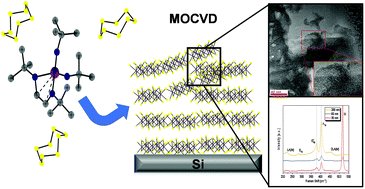
Dalton Trans., 2020,49, 13462-13474
https://doi.org/10.1039/D0DT02471F
Understanding KOtBu in atomic layer deposition – in situ mechanistic studies of the KNbO3 growth process
Providing a deeper understanding of alkali metal-containing ternary processes in ALD by in situ FT-IR and QCM mechanistic studies.
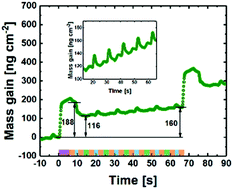
Dalton Trans., 2020,49, 13233-13242
https://doi.org/10.1039/D0DT02324H
Composition-tuned metal–organic thin-film structures based on photoswitchable azobenzene by ALD/MLD
We demonstrate the fabrication of in-situ crystalline thin films of various azobenzene (AZO) based photoresponsive metal–organic structures using the atomic/molecular layer deposition (ALD/MLD) technique.

Dalton Trans., 2020,49, 11310-11316
https://doi.org/10.1039/D0DT02062A
Molecular layer deposited alucone thin films from long-chain organic precursors: from brittle to ductile mechanical characteristics
We tailor mechanical properties of molecular-layer-deposited inorganic–organic films through control over the organic precursor length, relevant for battery applications.
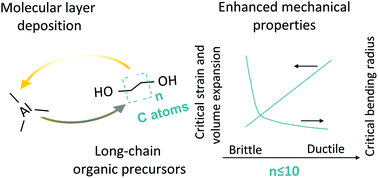
Dalton Trans., 2020,49, 10832-10838
https://doi.org/10.1039/D0DT02210A
First principles study of reactions in alucone growth: the role of the organic precursor
First principles investigation of the molecular mechanism of the growth of hybrid organic–inorganic thin films of aluminium alkoxides, known as “alucones”.

Dalton Trans., 2020,49, 8710-8721
https://doi.org/10.1039/D0DT01376E
Synthesis and characterization of novel zinc precursors for ZnO thin film deposition by atomic layer deposition
Novel zinc precursors were designed, synthesized and used for the deposition of ZnO thin films by ALD.
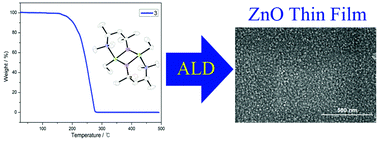
Dalton Trans., 2020,49, 4306-4314
https://doi.org/10.1039/C9DT04644E
Homogeneous Fe2O3 coatings on carbon nanotube structures for supercapacitors
The combination of carbon nanotubes with transition metal oxides can exhibit complementary charge storage properties for use as electrode materials for next generation energy storage devices.
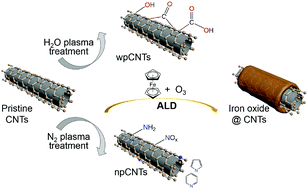
Dalton Trans., 2020,49, 4136-4145
https://doi.org/10.1039/C9DT04908H
Atomic/molecular layer deposition and electrochemical performance of dilithium 2-aminoterephthalate
Crystalline Li-terephthalate and amino-functionalized Li-terephthalate thin film electrodes are fabricated from gaseous precursors with ALD/MLD to show that the electron-donating amino group lowers the redox potential.
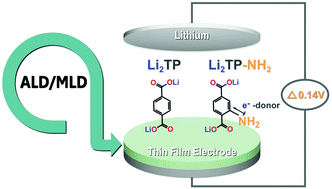
Dalton Trans., 2020,49, 1591-1599
https://doi.org/10.1039/C9DT04572D
Mesoporous ZnO thin films obtained from molecular layer deposited “zincones”
The synthesis of MLD-derived mesoporous ZnO with 20% of porosity is demonstrated and studied by advanced in situ characterization techniques.
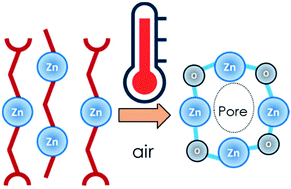
Dalton Trans., 2019,48, 14178-14188
https://doi.org/10.1039/C9DT02824B
Improving photoelectrochemical response of ZnO nanowire arrays by coating with p-type ZnO-resembling metal–organic framework
Superior photoelectrochemical performance of zinc oxide nanowire arrays is achieved by compactly coating MOF zinc glycolate with p-type conductivity.
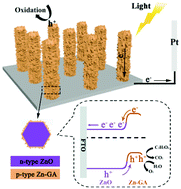
Dalton Trans., 2019,48, 9310-9316
https://doi.org/10.1039/C9DT01490J
On the role of micro-porosity in affecting the environmental stability of atomic/molecular layer deposited (ZnO)a(Zn–O–C6H4–O)b films
Correlation between the porosity and environmental stability of Zn-based hybrid multilayer films is studied by means of ellipsometric porosimetry.

Dalton Trans., 2019,48, 3496-3505
https://doi.org/10.1039/C9DT00189A
Aluminum dihydride complexes and their unexpected application in atomic layer deposition of titanium carbonitride films
Aluminum dihydride complexes containing amido-amine ligands were synthesized and evaluated as potential reducing precursors for thermal atomic layer deposition (ALD).
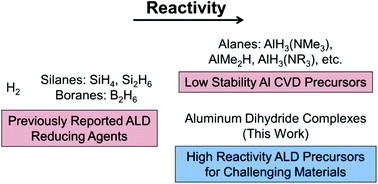
Dalton Trans., 2018,47, 10897-10905
https://doi.org/10.1039/C8DT02508H
The transformation behaviour of “alucones”, deposited by molecular layer deposition, in nanoporous Al2O3 layers
Wet and heat treatments of different alucones result in porous alumina with tuneable porosity and pore size.
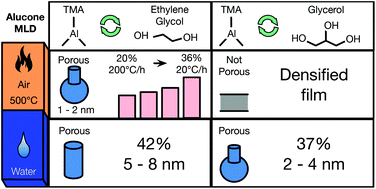
Dalton Trans., 2018,47, 5860-5870
https://doi.org/10.1039/C8DT00723C
About this collection
Atomic layer deposition (ALD) has been the fastest growing thin-film technology in the semiconductor industry for the last few decades, and is applied in photovoltaics systems and displays. The industrial applications naturally concern only few prototype materials (Al2O3, HfO2, ZnO, TiO2, etc.). However, in recent years the technique has been increasingly exploited towards new application domains and new materials, driving a continued demand for new precursors.
Molecular layer deposition (MLD) is a much less exploited counterpart of ALD for purely organic thin films. Particularly interesting though is the combination of ALD and MLD for hybrid inorganic-organic materials. This combined ALD/MLD technique was introduced in 2008 and it is now strongly emerging for various new MOF-like metal-organic materials and inorganic-organic multilayer structures which are believed to open up novel application possibilities.
This collection is guest edited by Dalton Transactions Associate Editor Prof. Maarit Karppinen (Aalto University) alongside Prof. Anjana Devi (Ruhr-University) and Prof. Jolien Dendooven (Ghent University)
Articles will be added to this themed collection as soon as possible after they are published. Please return to this page frequently to see the collection grow.
If you would like to contribute an article to this collection, please contact the Editorial Office at dalton-rsc@rsc.org with your proposed topic.